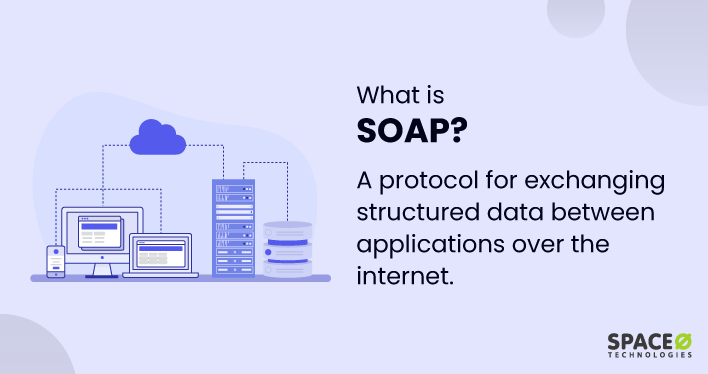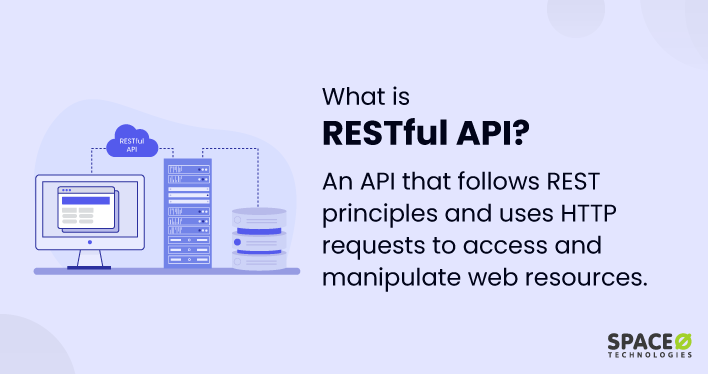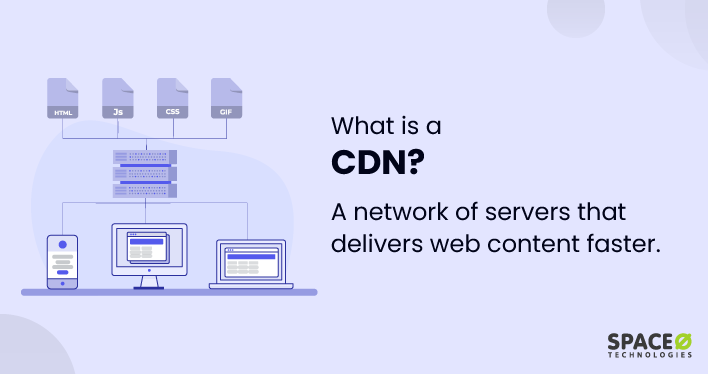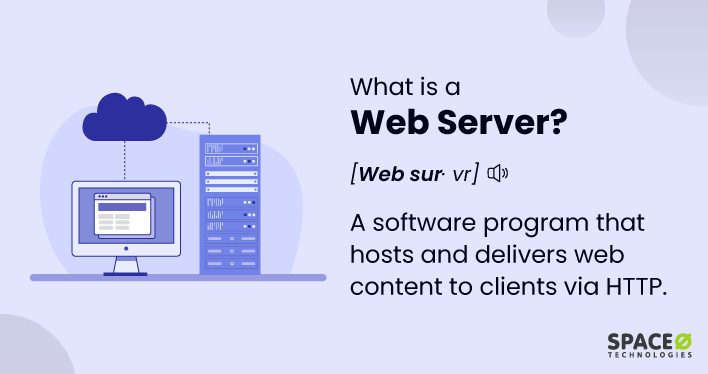Table of Contents
What is SOAP?
SOAP (Simple Object Access Protocol) is a messaging protocol specification for exchanging structured information while implementing web services in computer networks. SOAP uses XML (Extensible Markup Language) as its message format, and relies on application layer protocols, most commonly HTTP (Hypertext Transfer Protocol), for message negotiation and transmission.
SOAP API provides a standardized way for applications to interact and exchange data using the SOAP protocol. Being an integral part of web application architecture, SOAP API promotes interoperability, enabling diverse software systems to communicate seamlessly. In the structure of web application architecture, where various components communicate to deliver robust web functionality, the role of SOAP API becomes particularly critical. If you’re interested to know more about web application architecture and exploring other integral components that contribute to building a scalable web application, read our comprehensive blog post on web application architecture.
Since SOAP’s inception, REST (Representational State Transfer) has become a popular alternative approach to web services and is often seen as simpler to use for most web service applications. If you want to know more about RESTful API, its benefits, and how it works, learn from this article, what is RESTful API.
How SOAP Works?
Here’s a simplified overview of how SOAP works:
- Creating the SOAP Message: When one application wants to send data to another, it packages up that data into a SOAP message which includes SOAP requests. This actual message is written in XML, a markup language that’s readable by many different types of programs. The message contains a header and a body. The header has information about the message, such as who it’s for and what action needs to be taken, while the body contains the actual data. SOAP requests enable standardized communication between applications, allowing for seamless data exchange across different systems.
- Sending the SOAP Message: Once the SOAP message is ready, it’s sent over the internet using HTTPS (Hypertext Transfer Protocol Secure), the same protocol you use to browse websites. Because HTTP is so widely used, SOAP messages can be sent and received by many different types of applications, regardless of the different programming languages, operating systems, or platforms they’re running on.
- Receiving and Processing the SOAP Message: The receiving application gets the SOAP message and extracts the data from the body. It also reads the header to understand what action it needs to take with that data. The receiving application then performs the requested action – for example, it might store the data in a database, use it to update the user interface, or package it up in another SOAP message to send to a different application.
Sending a Response: After the receiving application has processed the SOAP message, it often sends a response back to the original sender using the simple mail transfer protocol (SMTP) to acknowledge the successful receipt and processing of the message. This response is also packaged up as a SOAP message, utilizing SOAP APIs, and sent back over HTTP.
By leveraging the power of SOAP APIs and SMTP, applications can seamlessly communicate and exchange data in a structured and standardized manner. In some cases, applications might use webhooks to send real-time updates in response to certain events or triggers. If you are not familiar with webhooks, here is a brief definition of a webhook.
That’s a very basic overview, but it gives you an idea of how SOAP, with its robust SOAP architecture, allows different client applications to communicate and share data with each other.
5 Advantages of Simple Object Access Protocol
SOAP is a robust and mature XML-based protocol with several advantages, especially in certain types of applications.
Here are some of the 5 key SOAP advantages:
- Language and Platform Independent: SOAP is completely independent of the programming language, operating system, or platform. As long as the application can send and receive an XML document over HTTP, it can utilize SOAP-based web services. This makes SOAP very flexible and adaptable to a wide range of environments.
- Supports Complex Operations: SOAP can handle complex operations that require significant processing and business logic. It can also handle transactional operations and supports ACID (Atomicity, Consistency, Isolation, Durability) properties.
- WS Standards Support: *SOAP is often used with a host of other WS* (Web Services*) standards like WS-AtomicTransaction (for transaction integrity), WS-ReliableMessaging (for message reliability), etc. The support of this broad standard can be very useful in certain types of applications.
- Support for Communication with Other Services: SSOAP allows for communication with other web services and APIs using the HTTP/HTTPS protocol, enabling message routing, intermediaries, and more. With SOAP, applications can seamlessly integrate with various web APIs, enabling efficient data exchange and interoperability across different systems and platforms.
- Built-in Error Handling: SOAP, with its well-defined message structure and adherence to the XML specification, includes a built-in error handling mechanism. In case of errors during processing, SOAP generates standardized fault messages, providing detailed information about the encountered issues. This fault message capability ensures effective error resolution and facilitates seamless communication between SOAP-based applications.
Overall, SOAP is a messaging protocol used for structured information exchange in web services. It utilizes XML as its message format and provides language and platform independence, support for complex operations, and compatibility with other WS* standards. SOAP enables communication between different applications over HTTP and includes built-in error-handling capabilities. Overall, SOAP is a mature and robust protocol for web service integration.






